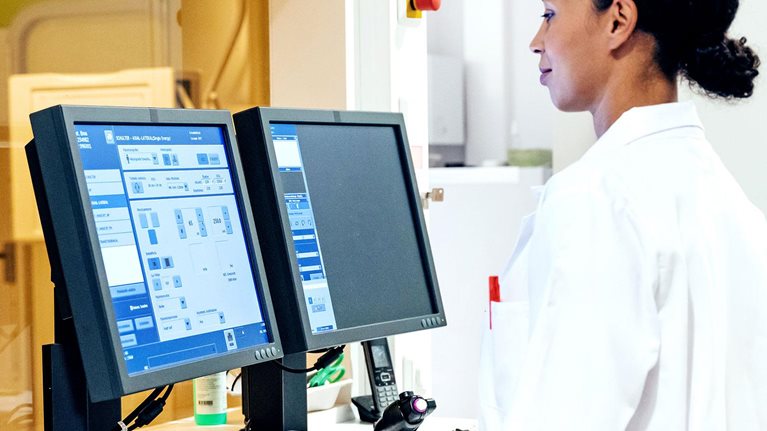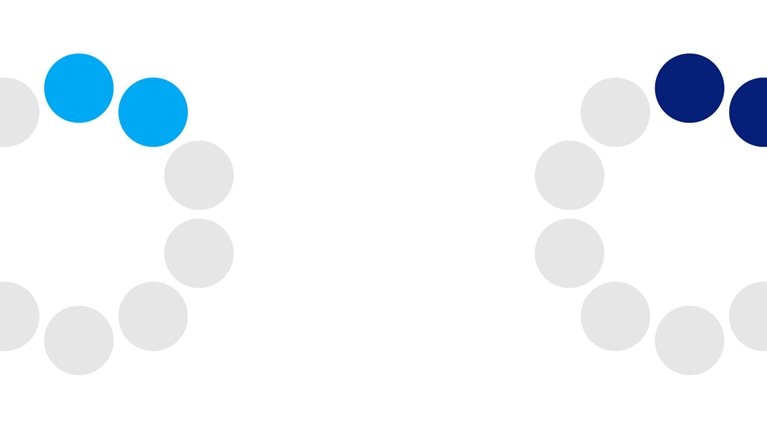Only since the 1990s have women participated in clinical trials at scale. It’s no wonder, then, that research on women’s health is inadequate. On this episode of The McKinsey Podcast, McKinsey senior partners Kweilin Ellingrud and Lucy Pérez join editorial director Roberta Fusaro to discuss McKinsey’s recent report about issues in women’s healthcare and what can be done to address them and potentially boost the global economy by $1 trillion a year.
In our second segment: what do you do when you realize you’re losing your audience during a presentation? McKinsey senior partner Sherina Ebrahim explains why sometimes you have to go off script.
This transcript has been edited for clarity and length.
The McKinsey Podcast is hosted by Roberta Fusaro and Lucia Rahilly.
Myths about women’s health
Roberta Fusaro: Kweilin, how do we define women’s health for the purposes of this report?
Kweilin Ellingrud: For this report, women’s health is defined holistically—from birth through adolescence, through the working years, into retirement, and then older age.
Roberta Fusaro: Lucy, what are some of the common misperceptions about women’s health?
Lucy Pérez: The first one is the myth of how we define women’s health. It’s not just sexual and reproductive health. It encompasses any condition that impacts women uniquely, differently, or disproportionately. One of the analyses we did showed that the vast majority of women’s health burden is associated with conditions that are not unique to women.
Another myth that you often hear is because women live longer, they are therefore healthier. But what our research shows is that even though women live longer, they spend 25 percent more time, on average, in poor health than men do.
That the health gap happens primarily during the later years in life is another myth. In fact, what we’ve found is the majority of this health gap happens during women’s prime working years. By not addressing the health gap during this time period, there is a significant economic impact.
Want to subscribe to The McKinsey Podcast?
Four causes of the women’s health gap
Roberta Fusaro: In the report, we outline four main causes for the gap: science related to women’s health, levels and types of care provided to women versus men, investments in women’s health, and data associated with women’s health. First off, how is science contributing to this health gap?
Lucy Pérez: Science is one of the main contributors to this health gap because of this persistent lack of appreciation for sex-based differences. For too long, science has thought of women as small men. Women started participating in clinical trials at scale only since 1993. As a result, we don’t have enough data and evidence to understand those sex-based differences, how they manifest, and the implications they have on determining women’s treatment to get optimal results.
Science is one of the main contributors to this health gap because of this persistent lack of appreciation for sex-based differences. For too long, science has thought of women as small men.
The science and data go hand in hand. We looked at over 650 academic publications to understand whether there are sex-based differences and if any differences impact health outcomes. What we found was that in about half of the papers, there was no mention of whether there were sex-based differences. No one had even asked the question, “Are there sex-based differences?” But in the other half of the research papers that did ask the question, two-thirds of the time the outcomes for women were worse than they were for men, and 10 percent of the time, the outcomes were worse for men than they were for women.
The takeaway from this analysis is the criticality of just asking the question, “Are there sex-based differences?” Even though the reality is that missing data means that many times we don’t know the answer. This is one of the big reasons why we find ourselves with this health gap.
Roberta Fusaro: We’ve all heard the anecdotal evidence regarding cardiovascular disease and how those symptoms present differently in men and women. What are the health gaps there around care?
Lucy Pérez: I love that you bring up cardiovascular disease because it is the number-one killer of women. And it is a condition we know can manifest differently in men and women.
For example, heart attacks. There’s the typical understanding and representation even in the media that you feel this pressure on your left side during a heart attack. But the reality is, for many women who suffer from a heart attack, it may manifest as a general feeling of discomfort, nausea, or the feeling that something is off.
As a result of this, women show up to the emergency room, and many times, physicians have not been trained to understand that heart attacks manifest differently for women compared with men. One of the studies from a few years ago quantified this as women having a seven times higher likelihood of dying upon showing up to an emergency room with symptoms of a heart attack.
That can be linked back to this idea that women were not getting sex-appropriate care. Women’s symptoms were being missed and minimized, and as a result of that, they may have been sent home instead of looked after with the right care.
Investing in women’s health
Roberta Fusaro: How much investment is there in women’s health?
Lucy Pérez: The investment in women’s health is very limited. One of the analyses we did was to look at the spend in research and development dollars on assets in clinical development. This is a way of understanding the next generation of medicines.
We found that less than 5 percent of research and development spending is going toward women’s health. Half of that is connected to oncology. But when you look at any other conditions, like endometriosis, the total R&D spend is less than 2 percent.
Conditions like endometriosis tend to affect one in ten women. But the pipeline of assets in development is in the single digits. And yet there are other conditions that are equally prevalent, like diabetes, and there are more than 300 assets in development. That shines a light on what a significant gap there is.
Roberta Fusaro: How much is there to gain economically if we address this health gap?
Kweilin Ellingrud: There’s a significant economic opportunity. If we size this globally, it’s about $1 trillion in GDP around the world by 2040. More importantly, it’s about seven extra days of healthy living per woman every single year.
A lot of this is because much of the health burden occurs during women’s working years, when women are most economically productive. Overall, if you add that up around the world, it’s about 75 million of what we call DALYs, or disability-adjusted life years.
When you break down that overall opportunity, seven days per woman every single year, 58 percent of it is around effectiveness and differences in treatments, and 34 percent is around care delivery.
If we size this globally, it’s about $1 trillion in GDP around the world by 2040. More importantly, it’s about seven extra days of healthy living per woman every single year.
The final 8 percent is around a data gap. I believe we can flip this and make it more of a virtuous cycle, where we’ve got the science and the data, and that leads to the investment—all driving to smaller gaps in care delivery. And, again, overall, it’s a huge economic opportunity, about $1 trillion globally.
The impressive piece is that $1 trillion of global economic opportunity is the equivalent of 137 million women in full-time positions by 2040. It’s an incredible boost to the workforce, to the economy. In some countries around the world, that represents a significant GDP increase.
Health areas with the best ROI
Roberta Fusaro: What are the areas of biggest market potential? Are there particular areas where we’re starting to see more investment?
Kweilin Ellingrud: There’s significant opportunity across the board to shift into that virtuous cycle we were talking about, both on the high prevalence but perhaps also the low daily impact side of things. Certainly, as we mentioned, endometriosis. And menopause is another where we’re seeing a lot more interest but still very little investment.
Also, in addition to investment in cardiovascular diseases, there are also depressive disorders, mental health issues, autoimmune conditions, and migraines—health issues that women are experiencing more frequently or differently than men are, and at higher levels. These are all very exciting economic opportunities.
Lucy Pérez: What has surprised me the most in doing this research is that the average time to diagnosis for endometriosis is a scary number. I was having a conversation with a group of women to see how long it took them to get diagnosed—it ranged from ten to 35 years.
That is just unacceptable. There are young girls who are being told, “You’re making this up to not go to school.” No, they are suffering. This is happening in the high school years, and it’s happening in the workplace. So endometriosis is the one that’s very near and dear to my heart because there is a long tale of suffering and lack of acknowledgment.
I’m gratified to see the increasing attention that is happening in the cardiovascular space. And I think we’ll see much more of that also in other conditions like the autoimmune disorders Kweilin referred to.
Roberta Fusaro: What are some of the interventions that either organizations or individuals can take? What are some of the solutions that we can implement to close the gap?
Kweilin Ellingrud: The biggest thing first is asking that question, “Is there a gender difference?” and “When does this intervention actually perform better for women versus men in the data?”
Closing that gap on the science side will lead to better data collection and sex disaggregation. And better data—both on valence and on the differences in the science—over time will lead to better funding and better investments for different treatments.
I also think this care gap that we talked about is critical. And it starts in medical school. How are we teaching the next generation of doctors? In actual practice, how are we closing those care gaps?
There’s a lot of research on both female patients and female doctors. When does pain get minimized? How do different care experiences happen based on the gender of the patient or the gender of the doctor? Answering these questions will give us a better understanding of how to close those gaps more systematically.
Lucy Pérez: This is not just about those who are in the healthcare space. Everyone has a role to play. For example, employers should ask themselves, “What business policies are we putting in place to support women’s health?” and “How do we think about the benefits we’re deploying to support women going through menopause?” That’s just one way employers can think about their own role in closing the women’s health gap.
Hand in hand with all this is how resources are being deployed and allocated. How are we investing as individuals and as organizations? How are we making sure that we are supporting the collection of the right data and the development of new tools and solutions that can help drive those better health outcomes? Because everyone wins when women have better health.
How generative AI might help—and hurt
Roberta Fusaro: We’re all thinking and talking so much about generative AI and other technologies. What role does technology play in addressing the health gaps in some or all of the four areas that we just went over?
Kweilin Ellingrud: There are a lot of reasons why I’m optimistic about what the future of generative AI will look like for women’s health, but there are also a couple reasons why I’m pretty cautious and a bit nervous. I’m optimistic because research and development is one of the top four use cases for generative AI, and that can dramatically shorten development and innovation cycles and can help innovate in ways that we could only dream of before. So the ability to understand what potential new treatments could look like with generative AI is immense. I love the potential there.
On the other side of things, generative AI trains from data that already exists, and it can bake in or reinforce the bias that Lucy was describing in the science and research that already exists, and in the lack of data that we have that does not disaggregate by sex. We must be quite cautious, as we accelerate the pipeline for research and development, to not invest in the wrong places and to ensure that we’re looking at gender-disaggregated experiences and results.
Lucy Pérez: So far, our discussion has focused on gender-based research. But we also need to think about this from an intersectional point of view. Some of these health gaps are all the more pronounced for women of color.
And that really amplifies the requirement to have good data sets, which will help ensure that we minimize the risk of amplifying the biases that already exist today because it is going to be true for women, but all the more so for other marginalized populations.
Next steps
Roberta Fusaro: What do you hope the people reading this report do with the findings?
Lucy Pérez: I think it is one of taking action. And that action manifests in much more and richer pipelines of products and development for all of these conditions for which we know there is a need for innovation. It is seeing that there are many more research dollars that are being directed toward asking the question, “Are there sex-based differences, and what do we do about that?”
It is recognizing that in every medical school, as part of academic curricula, you are teaching the next generation of physicians about when there are sex-based differences and how those manifest. And that this is, for example, incorporated into the clinical-decision support tools that are increasingly being used.
This is one of the more exciting applications of technology that can really contribute to closing that health gap. And let’s make sure we’re always rapidly scaling the things that work and not putting more investment behind things that we know are not working.
Kweilin Ellingrud: I love that action orientation, Lucy. As for the 25 percent more years spent in poor health, I would love to see that gap completely disappear and for women to be in better health for a longer period and to have the confidence to advocate for themselves and be able to share when they do have health challenges. I would love for women to be taken seriously and to get the adequate care that they need. But, ultimately, I think it’s about that health gap disappearing and women spending more years in a healthy, contributing life.
When the best-laid plans go awry
Lucia Rahilly: And now, no matter how much you prepare for a meeting, sometimes you have to pivot from your prep. Here’s McKinsey senior partner Sherina Ebrahim.
Sherina Ebrahim: I was a new partner, and we had a team meeting with a client who had asked us about a certain topic not quite related to our area of focus but who still wanted to know if we had any views on the topic. So, our team did a fair amount of research and pulled together some pages to present to the client.
We started to have the meeting, and about ten minutes into it I was watching the body language of the client, and he was truly disinterested. And the poor team was continuing with our presentation. So I said, “Let’s take a break for a minute.” I stopped and asked the client, “Are you getting out of this what you had hoped for?” And he said, “Not really, no.” And so we paused, and I said, “Why don’t we put the paper aside? What is it that you really want to make sure we’re spending time on, because obviously we didn’t hit the mark of what you wanted to talk about today.”
As it turned out, since the time that he had first asked the question, his mind had evolved on the topic. And so we just put everything aside and we said, “OK, let’s engage on that. We may not be the experts in the room on this topic to have that conversation, but we can get partway based on the work we’ve done. We can do some first principles, problem solving, and then we can come back and make sure we evolve the discussion from here.”
It was a really great meeting. The client appreciated it, and what I learned from that is, you really need to read the body language in the room. You need to release your agenda as well and have confidence in yourself that between the people in the room, we can move the conversation forward. It may not be the perfect answer, but that’s OK. And it was a much better collaborative discussion with the client and really set us off on a good foot for the next meeting.


